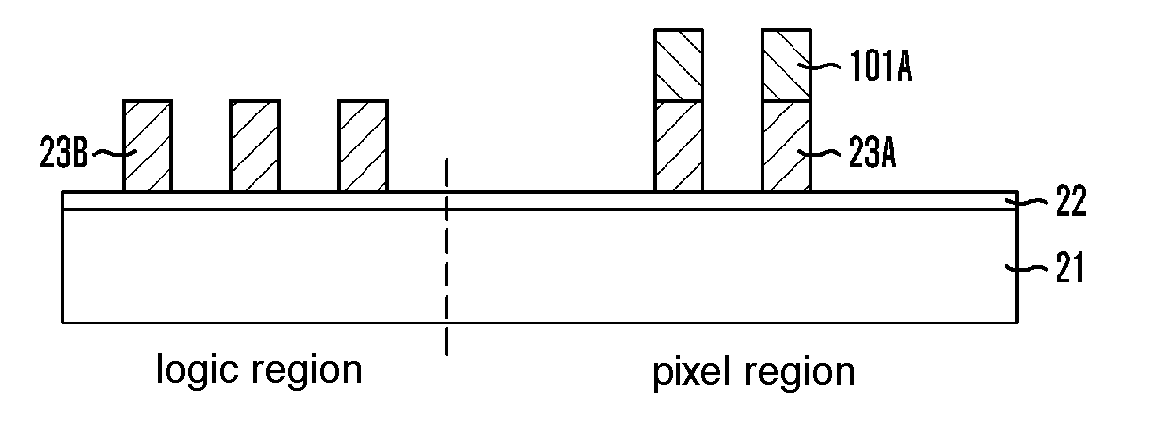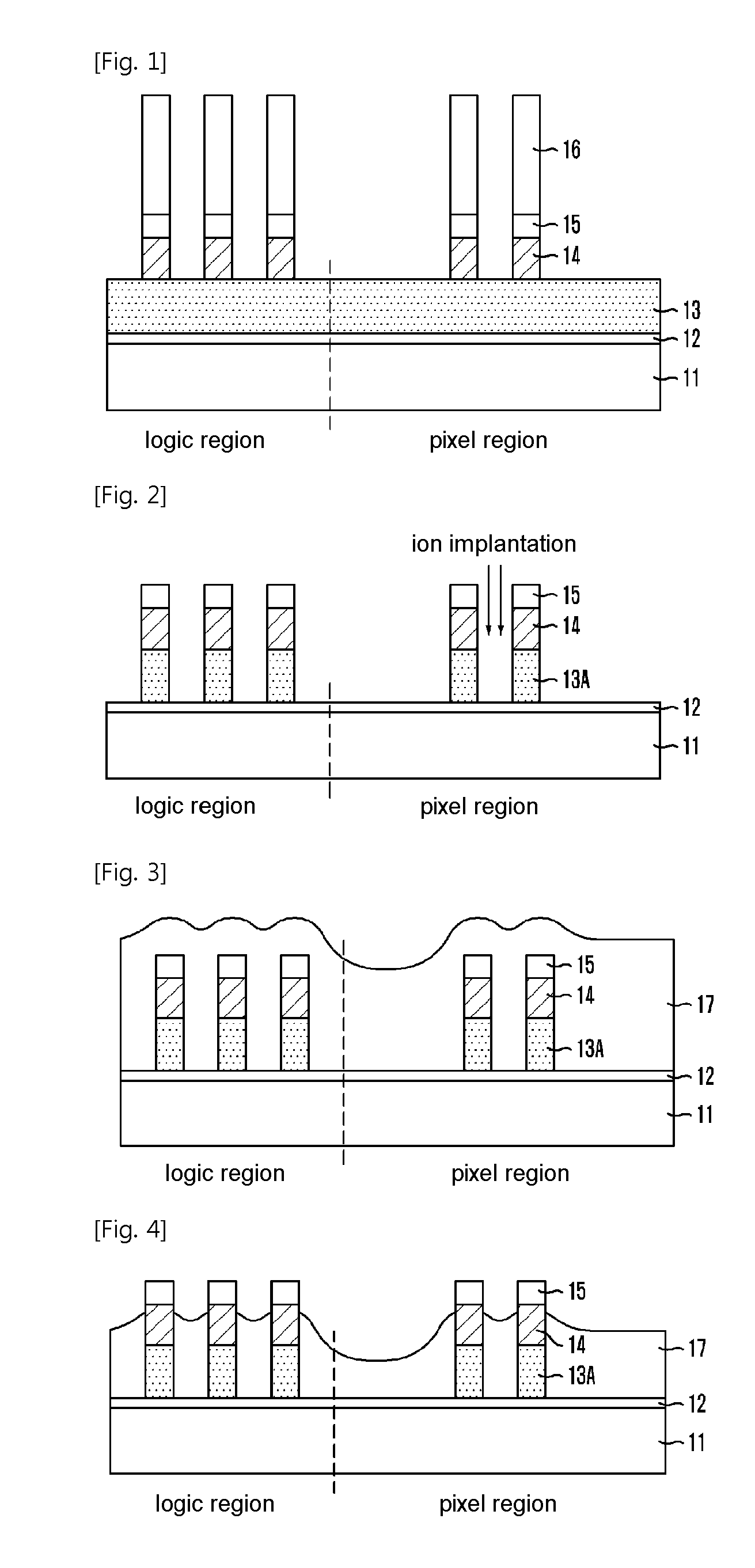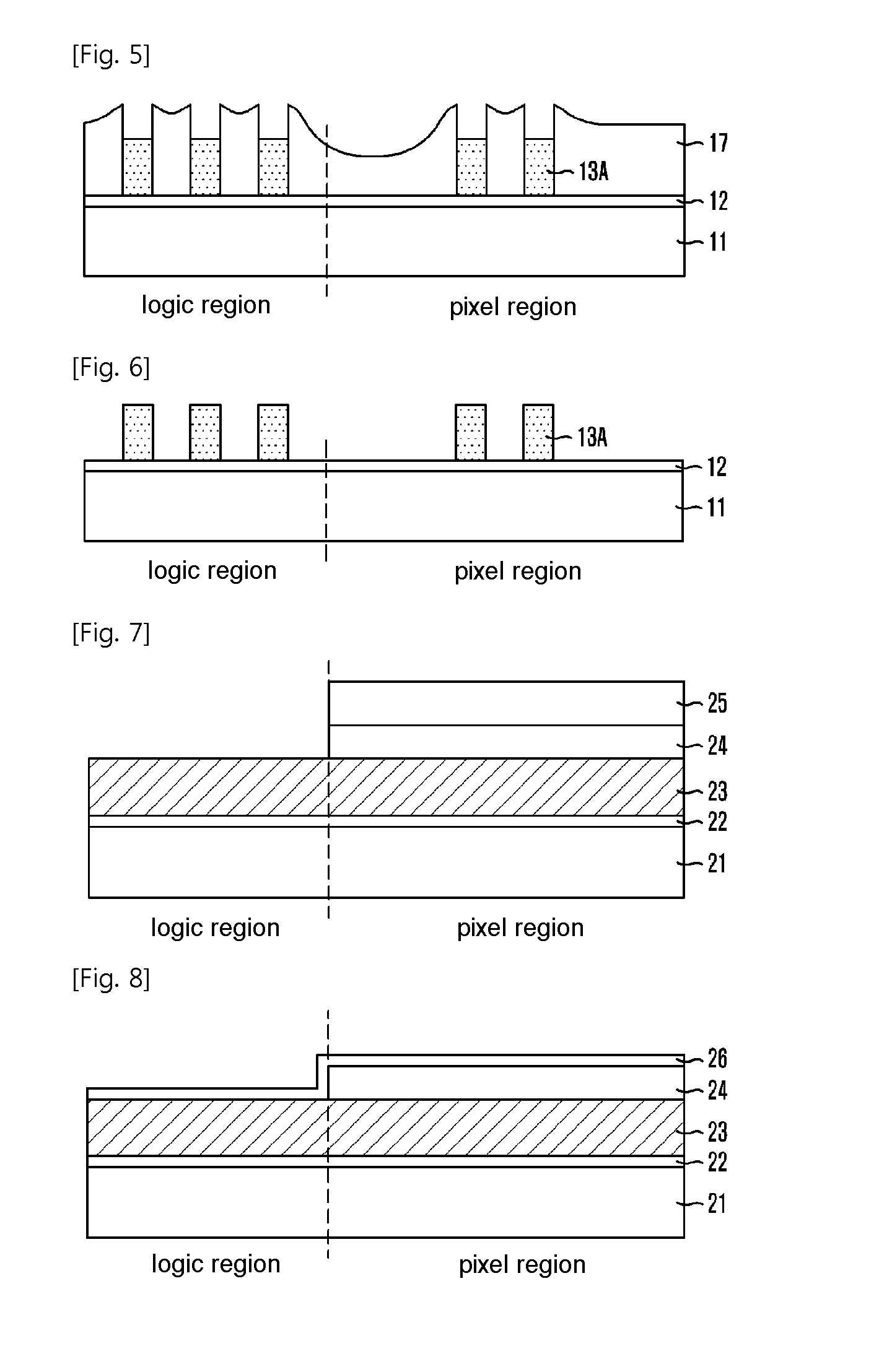Method of manufacturing CMOS image sensor using double hard mask layer
a technology of cmos image sensor and mask layer, which is applied in the direction of radio frequency controlled devices, instruments, television systems, etc., can solve the problems of difficult control of critical dimensions and complicated processes, and achieve the effect of easy control, thin thickness and critical dimensions
- Summary
- Abstract
- Description
- Claims
- Application Information
AI Technical Summary
Benefits of technology
Problems solved by technology
Method used
Image
Examples
Embodiment Construction
Technical Problem
[0017]Accordingly, the present invention has been made to solve the above-mentioned problems occurring in the prior art, and the present invention provides a method of manufacturing a CMOS image sensor, capable of forming silicide in a logic region and facilitating ion implantation into a pixel region while keeping a hard mask layer at a thin thickness without performing a process for removing the hard mask layer.
Technical Solution
[0018]In addition, the present invention provides a method of manufacturing a CMOS image sensor, capable of easily controlling the critical dimension when forming a gate pattern while improving the uniformity of the critical dimension of a gate photoresist pattern.
[0019]In accordance with an aspect of the present invention, there is provided a method of manufacturing a CMOS image sensor, the method including the steps of: forming a gate conductive layer on a substrate on which a pixel region and a logic region are defined; forming a hard m...
PUM
| Property | Measurement | Unit |
|---|---|---|
| gate conductive | aaaaa | aaaaa |
| conductive | aaaaa | aaaaa |
| insulating | aaaaa | aaaaa |
Abstract
Description
Claims
Application Information
 Login to View More
Login to View More - R&D
- Intellectual Property
- Life Sciences
- Materials
- Tech Scout
- Unparalleled Data Quality
- Higher Quality Content
- 60% Fewer Hallucinations
Browse by: Latest US Patents, China's latest patents, Technical Efficacy Thesaurus, Application Domain, Technology Topic, Popular Technical Reports.
© 2025 PatSnap. All rights reserved.Legal|Privacy policy|Modern Slavery Act Transparency Statement|Sitemap|About US| Contact US: help@patsnap.com



